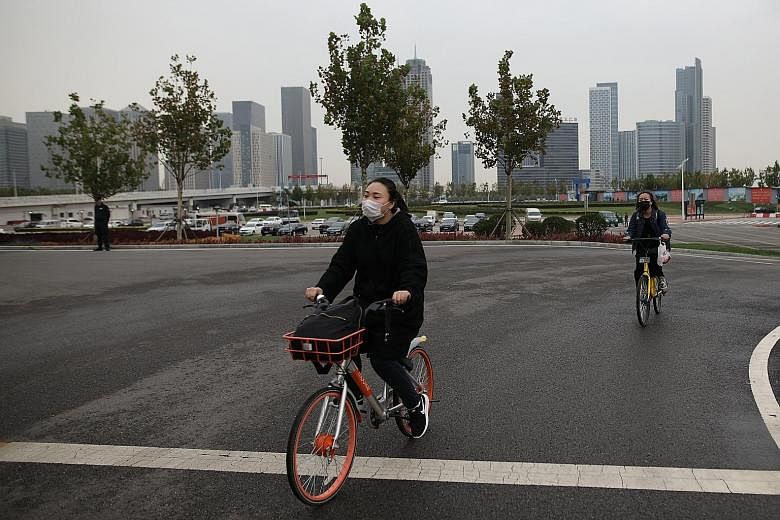Measures to clean up China's smoggy skies, dirty rivers and toxic soil complement economic growth and have not caused any job losses, a senior official said yesterday.
"If you say there's no impact partially or on a micro level on the companies, that's impossible," said Environmental Protection Minister Li Ganjie. "But from a long-term and macro perspective, there's no impact at all."
Mr Li added that local economies that underwent central environmental inspections were not negatively affected by the investigations.
Last year, the central government launched inspections of local governments' work to protect the environment. More than 6,000 local officials were punished for negligence or malpractice as a result.
Speaking on the sidelines of the 19th national congress of the Chinese Communist Party, Mr Li said China should aim to meet its own air-quality standard by 2035 in order to meet President Xi Jinping's goal of building a "Beautiful China".
"In terms of air quality, the national average of the PM2.5 readings, including those of our key regions, should be brought down to 35mcg per cubic m," he said, referring to the concentration level of hazardous particles in the air.
"But it will be extremely difficult to reach this standard, and requires us to put in great effort," he added.
In the first eight months of this year, the national average PM2.5 level stood at 42mcg per cubic m, down 2.3 per cent from the same period last year. But the average reading for the capital region, which includes Beijing, Tianjin and the surrounding Hebei province, climbed 10.2 per cent to 65mcg from a year earlier.
Mr Li told reporters there are still "numerous problems" hampering the fight against smog, including the slow pace of structural changes.
"The proportion of heavy and chemical industries is still too high. Coal still accounts for too high a proportion in the energy mix," he said, noting there is also an over-reliance on trucks for transporting goods.
Some companies are still illegally emitting waste and pollutants, and some local governments are not enforcing measures from the central government, he added.
He stressed that central environmental inspections will continue and some key regions and industries will be specifically targeted. Provincial-level environmental inspection teams will be set up next.
Mr Li noted that the tough production curbs from last month to March next year to fight smog in 28 northern cities will not be a one-off "campaign".
"We will carry on with this (seasonal effort) for the next few years," he said.
Separately, senior economic official Yang Weimin said at the same press briefing that more will be done to provide incentives for local governments and companies to reward conservation and environmentally friendly practices.
"We have been comprehensively enforcing government supervision in the past few years, but... our incentive-based mechanism has yet to be set up," said the deputy director of the Office of the Central Leading Group on Financial and Economic Affairs.
"For example, how can (the companies) benefit from being less polluting? We still need to put more effort into building this mechanism. This will be a focus of the next steps of our reforms," he added.

